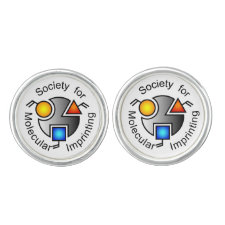
Authors: Hu C, Yang Z, Yan FH, Sun BC
Article Title: Extraction of the toluene exposure biomarkers hippuric acid and methylhippuric acid using a magnetic molecularly imprinted polymer, and their quantitation by LC-MS/MS.
Publication date: 2019
Journal: Microchimica Acta
Volume: 186
Issue: (3)
Article Number: 135.
DOI: 10.1007/s00604-019-3239-6
Abstract: A magnetic polymer was molecularly imprinted with hippuric acid (HA) to obtain a nanomaterial with an architecture of type Fe3O4@SiO2@MIP. It was used as a sorbent for magnetic solid phase extraction of HA and methylhippuric acids (2-MHA, 3-MHA, 4-MHA) from urine samples. The respective imprinting factor are 4.6, 2.7, 2.0 and 1.8, respectively, and the selectivity coefficients are 1.7, 2.3 and 2.6. The effects of adsorbent amount, extraction time, pH value, ionic strength, desorption solvent and desorption time on the extraction of HA and MHA were investigated. Following elution with 1 mM NaOH solution, the 4 HAs were quantified by ultra-performance liquid chromatography with mass spectrometric detection. Under the optimal experimental conditions, the limits of detection (at S/N = 3) range between 89 ng L-1 (for HA) and 170 ng L-1 (for 4-MHA), the limits of quantification (at S/N = 10) range between 300 ng L-1 (for HA) and 570 ng L-1 (for 4-MHA), the linear range extends from 500 ng L-1 to 10 mg L-1, the relative standard deviations of intra-day range between 6.4 and 9.6% (for n = 6 at 10 μg L-1) and inter-day range between 9.2 and 11.5% (for n = 6 at 10 μg L-1). The method was successfully applied to the analysis of HA and MHA in (spiked) urine, and good recoveries were obtained
Template and target information: hippuric acid, HA, 2-methylhippuric acid, 3-methylhippuric acid, 4-methylhippuric acid, 2-MHA, 3-MHA, 4-MHA
Author keywords: Magnetic solid phase extraction, Vortex-assisted extraction, Ultrasonic liquid desorption, Fourier transform infrared spectrometry, transmission electron microscopy, X-ray photoelectron spectroscopy, Urine analysis



Join the Society for Molecular Imprinting

New items RSS feed
Sign-up for e-mail updates:
Choose between receiving an occasional newsletter or more frequent e-mail alerts.
Click here to go to the sign-up page.
Is your name elemental or peptidic? Enter your name and find out by clicking either of the buttons below!
Other products you may like:
 MIPdatabase
MIPdatabase









